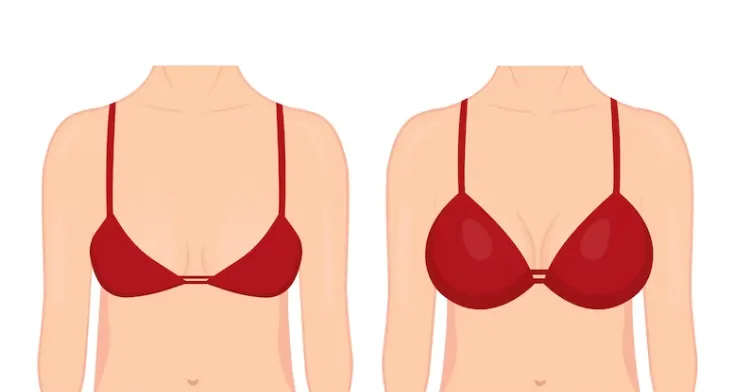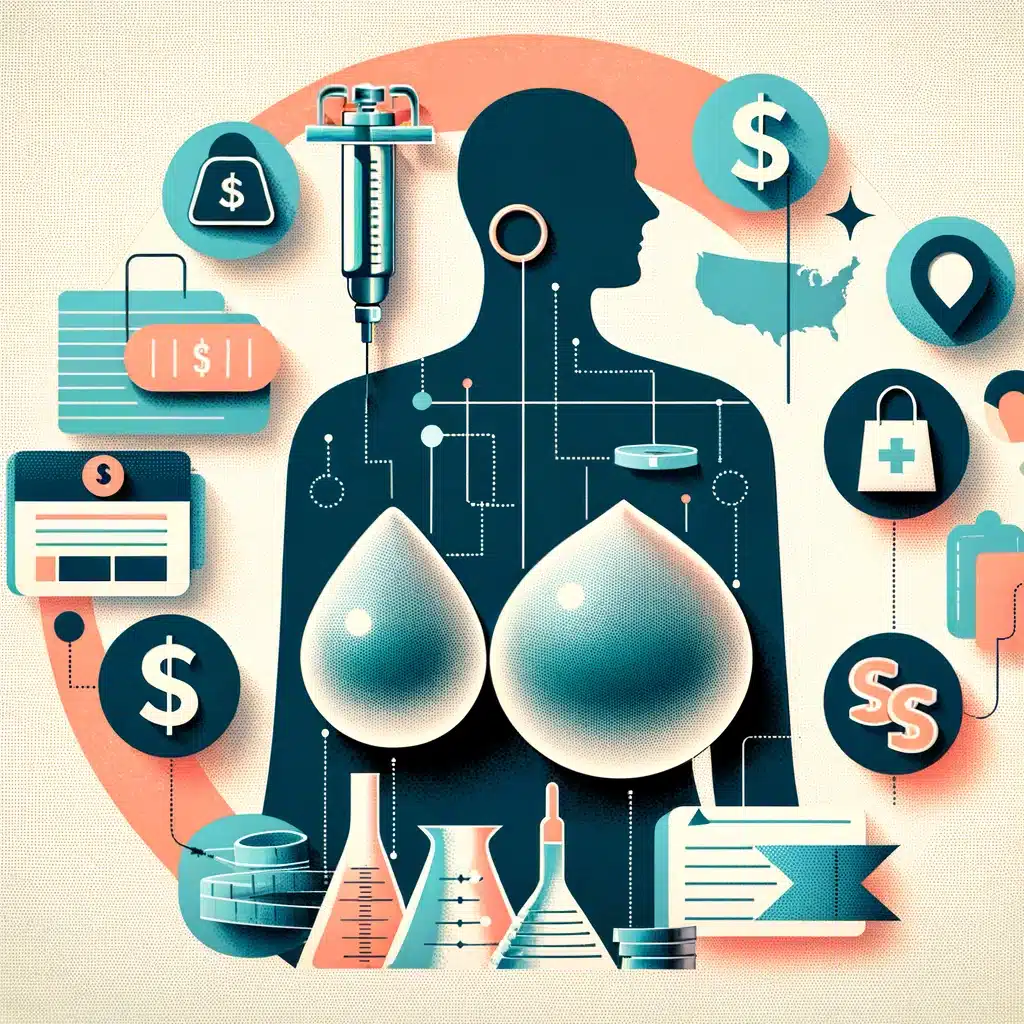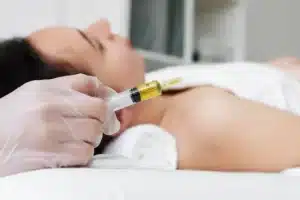The cost of breast augmentation varies widely, influenced by choices between silicone and saline implants, the expertise of plastic surgeons, and the overall surgery costs. Each option presents unique benefits and considerations, impacting the final investment in one’s aesthetic journey. Understanding these variables is crucial for anyone considering this transformative procedure.
Causes of Increasing the Cost of Breast Augmentation
The cost of breast augmentation is influenced by many factors that can significantly impact the final price. In this article, we will delve into the causes behind the varying costs of breast augmentation, explore different types of breast augmentation procedures, discuss insurance coverage possibilities, and provide insights into the nuances of the expenses associated with the procedure.
Breast augmentation is a cosmetic surgical procedure that aims to enhance the size and shape of a person’s breasts. While the decision to undergo this procedure can be influenced by factors such as personal preferences and body image concerns, one crucial aspect that individuals must consider is the cost of breast augmentation.
Several factors contribute to the fluctuating cost of breast augmentation. Some of the key causes include:
- Implant Quality: The type and quality of breast implants can greatly influence the overall cost.
- Surgeon’s Expertise: Highly experienced and reputable surgeons often charge higher fees.
- Geographical Location: The cost can vary based on the location of the surgical facility and the cost of living in that area.
- Hospital or Clinic Fees: Surgical facility fees, anesthesia, and post-operative care expenses add to the total cost.
- Preoperative Assessments: Diagnostic tests and medical evaluations before surgery are additional expenses.
- Type of Anesthesia: Local and general anesthesia can impact costs.
- Recovery and Aftercare: Costs related to follow-up visits, medications, and post-operative garments.
- Surgical Techniques: Different techniques, like incision placement, can affect the cost.
- Incidental Expenses: Transportation, accommodation, and meal costs if the surgical facility is far from home.
- Potential Complications: Complications requiring additional procedures can increase the overall cost.
Different Types of Breast Augmentations
There are several types of breast augmentation procedures, each tailored to meet individual needs:
Mammoplasty, also known as breast surgery or breast augmentation, is a surgical procedure designed to enhance the shape, size, and overall appearance of the breasts. It is a popular cosmetic surgery option chosen by individuals seeking to improve their self-confidence, restore breast symmetry, or reconstruct breasts following mastectomy. breast surgery has evolved, providing various options tailored to individual needs and goals.
There are several different types of breast augmentations, each tailored to meet the specific needs and preferences of individual patients. Here are some of the common types:
Implant Type
Breast implants are primarily categorized based on the material used to fill them. The two main types of breast implants are:
Saline Implants
These implants are filled with sterile saline (saltwater) solution. They are inserted empty and then filled to the desired size.
Silicone Gel Implants
These implants are filled with silicone gel, which closely mimics the feel of natural breast tissue.
Implant Placement
Breast implant placement refers to the positioning of the implants relative to the chest muscles and breast tissue. There are two main techniques for breast implant placement:
Sub glandular
The implant is placed behind the breast tissue but in front of the chest muscle.
Submuscular
The implant is placed partially or completely beneath the chest muscle, providing additional coverage and support.
The choice of breast augmentation technique depends on various factors including the patient’s anatomy, desired outcome, surgeon’s recommendation, and safety considerations. It’s essential for patients to have a thorough consultation with a qualified plastic surgeon to discuss their options and make an informed decision.
How long breast implants last
Breast implants are not considered lifetime devices, and their longevity can vary depending on factors such as the type of implant, the patient’s body, lifestyle, and potential complications. On average, breast implants are expected to last about 10 to 20 years, but some may last longer, while others may need to be replaced sooner. Silicone implants are known for their durability and cohesive gel structure, which may contribute to a longer lifespan compared to saline implants. However, it’s essential to note that regardless of the type of implant, they are not immune to wear and tear over time.
Despite advancements in implant technology, complications such as capsular contracture (scar tissue tightening around the implant), implant rupture, or changes in breast shape or size may necessitate implant removal or replacement. Additionally, factors such as pregnancy, weight fluctuations, and aging can also affect the appearance and integrity of breast implants over time. Regular follow-up appointments with a plastic surgeon are essential to monitor the condition of breast implants and address any concerns promptly.
Ultimately, the decision to replace breast implants depends on various factors, including the patient’s aesthetic goals, comfort, and the presence of any complications. It’s crucial for patients with breast implants to be aware of the potential lifespan of their implants and to stay informed about any updates or recommendations from their plastic surgeon regarding the long-term maintenance and care of their implants.
Insurance Coverage for Breast Augmentation
Breast augmentation is usually considered an elective cosmetic procedure, and insurance typically does not cover its cost. However, there are exceptions when breast augmentation is performed for reconstructive purposes after a mastectomy or due to congenital deformities.

.
Things to Know About the Cost of Breast Augmentation
- Breast augmentation costs vary widely, ranging from $3,000 to $10,000.
- Research and consult with multiple surgeons to understand pricing differences.
- A higher cost doesn’t always guarantee better results.
- A surgeon’s reputation and experience play a significant role in cost determination.
- Beware of unusually low prices, which might indicate subpar quality or hidden fees.
- Geographical location affects costs – procedures in urban areas tend to be pricier.
- Additional procedures like breast lifts can increase the overall cost.
- Revision surgeries due to unsatisfactory outcomes can lead to additional expenses.
- Financing options are available to ease the financial burden.
- Inclusive packages might cover various expenses in a single fee.
- Maintenance and potential replacement of implants are additional costs.
- Healing time can affect post-operative work and income.
- Transparent surgeons will provide a detailed breakdown of costs during consultations.
- Insurance seldom covers costs for elective cosmetic augmentation.
- Choosing a certified surgeon reduces risks and potential corrective costs.
- Consider long-term implications of costs, including follow-up appointments.
- Weight the emotional and psychological benefits against the financial burden.
- Some surgeons offer virtual consultations to save on travel costs.
- Preoperative health optimization can minimize complications and additional costs.
- Personalized aftercare instructions can prevent complications and save money.
Breast augmentation does not correct severely drooping breasts. A breast lift may be required along with a breast augmentation for sagging breasts to look fuller and lifted. Connect Website

How much does breast augmentation cost?
The average cost of breast augmentation surgery is $4,294, according to the latest statistics from the American Society of Plastic Surgeons. This average cost is only part of the total price – it does not include anesthesia, operating room facilities or other related expenses. Please consult with your plastic surgeon’s office to determine your final fee.
Breast augmentation is a cosmetic surgical procedure that has gained popularity over the years, allowing individuals to enhance the size and shape of their breasts. It offers a solution for those who desire to feel more confident in their appearance, achieve better symmetry, or regain lost volume.
A surgeon’s fee for breast augmentation will be based on his or her experience, the type of procedure used and the geographic office location. Many plastic surgeons offer patient financing plans for breast augmentation, so be sure to ask.
Cost Analysis by Renowned Universities and Surgeons
The cost of breast augmentation, a highly sought-after cosmetic surgery procedure, has been subject to extensive research and analysis by top-tier institutions and experts in the field of plastic surgery. Renowned universities such as Johns Hopkins University and Harvard Medical School, alongside prominent figures like Dr. Patricia McGuire and Dr. Scott Spear, have contributed significantly to the development and refinement of breast augmentation techniques, thereby influencing its cost structure. These experts and institutions have been at the forefront of integrating new materials, such as cohesive silicone gel implants, and advanced surgical techniques that can impact the overall expense of the procedure.
Within the realm of cosmetic surgery, the most active entities often include both specialized clinics and larger hospital groups renowned for their cosmetic surgery departments. For instance, the Cleveland Clinic’s Cosmetic & Plastic Surgery Center is noted for its pioneering work in aesthetic procedures, including breast augmentation, and plays a crucial role in setting benchmarks for procedural costs. Recent years have seen a fluctuation in the cost of breast augmentation, with figures ranging significantly depending on factors such as geographic location, the surgeon’s expertise, and the type of implants used.
As of the latest statistics, the average cost of breast augmentation in the United States can vary from $3,500 to $10,000, a range that encapsulates everything from the surgeon’s fee to the cost of the implants themselves and ancillary expenses such as anesthesia and facility fees. This variability underscores the importance of understanding the specialized terms and factors that contribute to the cost of breast augmentation, enabling patients to make informed decisions about their procedures.

What Affects Breast Augmentation Costs
Several factors influence the cost of breast augmentation surgery, making it variable among patients and clinics. First and foremost is the experience and reputation of the surgeon. Surgeons with extensive experience and a high level of expertise often command higher fees due to their track record of successful outcomes and patient satisfaction. Additionally, the geographic location of the practice plays a significant role in determining costs, as practices in urban areas or regions with a higher cost of living tend to have higher fees compared to those in rural or less affluent areas.
The type of implants used also affects the cost of breast augmentation surgery. Silicone implants are generally more expensive than saline implants due to their higher material cost and the manufacturing process involved. Cohesive gel implants, also known as gummy bear implants, typically come with an even higher price tag due to their advanced technology and perceived benefits such as durability and natural feel. Furthermore, additional costs such as facility fees, anesthesia fees, pre-operative tests, post-operative care, and any necessary medications or garments can significantly impact the overall cost of the procedure.
Moreover, the complexity of the surgery and any additional procedures performed alongside breast augmentation can influence the cost. For example, patients requiring breast lift (mastopexy) in conjunction with augmentation may incur higher fees due to the increased surgical time, complexity, and expertise required. Similarly, patients undergoing revision surgery or corrective procedures to address complications or dissatisfaction with previous surgeries may face higher costs due to the additional resources and expertise needed to achieve optimal outcomes. Overall, patients should carefully consider all these factors and consult with their surgeon to understand the breakdown of costs and make an informed decision based on their individual needs and budget.

What is the recovery process like?
The recovery process after breast augmentation surgery varies from person to person, but generally follows a similar timeline. Immediately following the procedure, patients can expect to experience some discomfort, swelling, and bruising around the chest area. Pain medication prescribed by the surgeon can help manage any discomfort during the initial recovery period. Patients are typically advised to rest and avoid strenuous activities for the first few day’s post-surgery to allow the body to heal properly.
During the first week, patients may need to wear a surgical bra or compression garment to support the breasts and minimize swelling. It’s essential to follow the surgeon’s post-operative instructions regarding wound care, medications, and activity restrictions to ensure a smooth recovery. Most patients can return to light activities within a week but should avoid lifting heavy objects or engaging in vigorous exercise for several weeks to avoid complications.
Over the following weeks and months, swelling will gradually subside, and the breasts will settle into their final position. While some patients may feel comfortable returning to work and normal activities within a couple of weeks, it may take several months for full recovery and for the final results of the surgery to become apparent. Patients should attend follow-up appointments with their surgeon to monitor their progress, address any concerns, and ensure that the healing process is progressing as expected. Overall, patience, proper rest, and adherence to post-operative instructions are key to a successful and comfortable recovery after breast augmentation surgery.
Summary
In conclusion, the cost of breast augmentation is a multifaceted aspect that encompasses various elements, including the type of implants chosen, such as saline or silicone, the proficiency and reputation of the plastic surgeons, and the comprehensive surgery costs. Additionally, the expense related to post-operative care is a critical component that contributes to the overall financial planning for the procedure. Each of these factors interplays to define the final cost, making it imperative for potential patients to conduct thorough research and consultations to understand the full scope of their investment.
Moreover, geographic variation plays a significant role in determining the cost of breast augmentation, with prices fluctuating based on the location of the practice and the local market rates. This variation underscores the importance of considering multiple factors when evaluating the cost of breast augmentation. Ultimately, while the financial aspect is crucial, ensuring the quality of care, the expertise of the surgeon, and the suitability of the implant types for the patient’s desired outcomes are paramount considerations in achieving satisfactory aesthetic results.
FAQs
1. What factors influence the cost of breast augmentation surgery?
Several factors can influence the cost of breast augmentation surgery, including the surgeon’s experience and reputation, the geographic location of the practice, the type of implants used, facility fees, anesthesia fees, pre-operative tests, and post-operative care.
2. How much does breast augmentation surgery typically cost?
The cost of breast augmentation surgery can vary widely depending on the factors mentioned earlier. On average, it can range from $4,000 to $10,000 or more. This cost may or may not include fees for implants, anesthesia, facility, and other associated costs.
3. Are there different types of breast implants, and do they affect the cost?
Yes, there are different types of breast implants, including saline implants, silicone implants, and cohesive gel implants (also known as gummy bear implants). The cost of these implants can vary, with silicone and cohesive gel implants generally being more expensive than saline implants.
4. Does health insurance cover the cost of breast augmentation surgery?
In most cases, health insurance does not cover the cost of breast augmentation surgery because it is considered a cosmetic procedure. However, there may be exceptions in cases where breast augmentation is performed for reconstructive purposes after mastectomy or for other medical reasons.
5. Are there financing options available for breast augmentation surgery?
Yes, many plastic surgery practices offer financing options to help patients cover the cost of breast augmentation surgery. These options may include payment plans, medical credit cards, or financing through third-party providers.
6. How can I find a reputable and experienced surgeon for breast augmentation surgery?
It’s essential to research and choose a board-certified plastic surgeon who has experience performing breast augmentation surgery. You can start by asking for recommendations from friends or family members, reading online reviews, and scheduling consultations with multiple surgeons to discuss your goals and concerns. Be sure to ask about the surgeon’s experience, credentials, and before-and-after photos of their previous patients.
Breast Augmentation | American Society of Plastic Surgeons (plasticsurgery.org)
https://www.fda.gov/medical-devices/breast-implants/risks-and-complications-breast-implants



